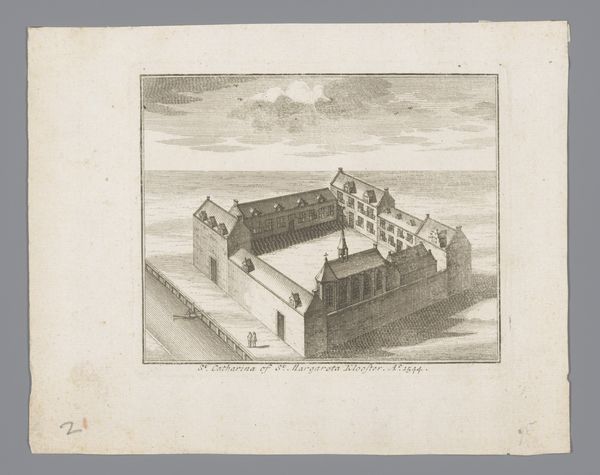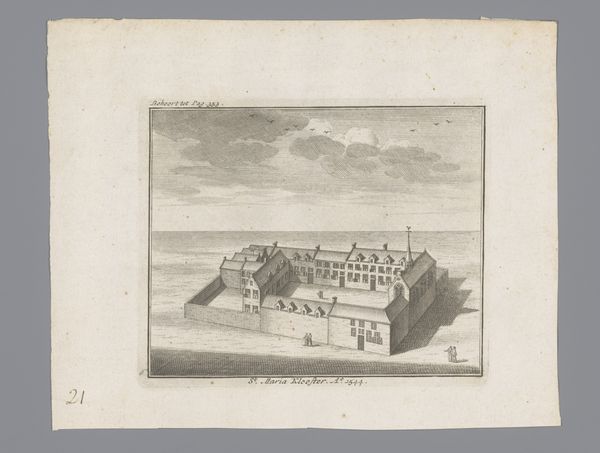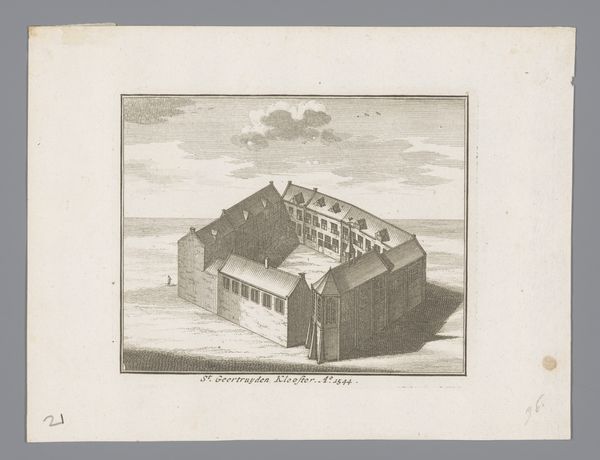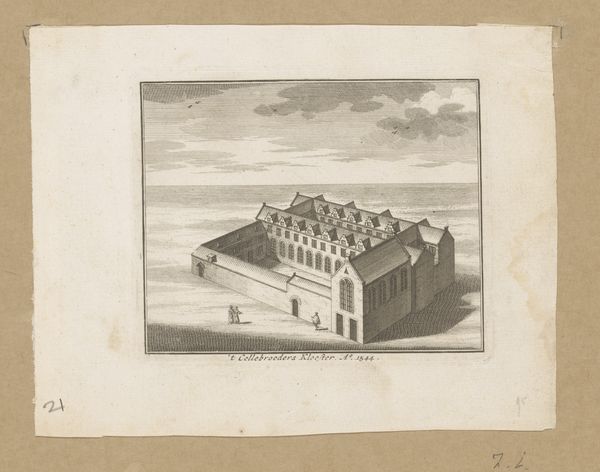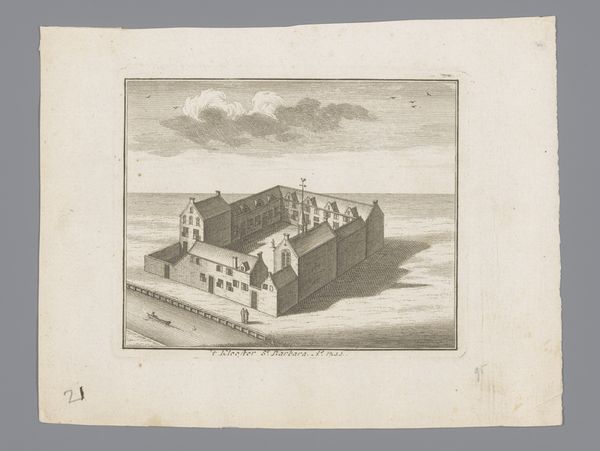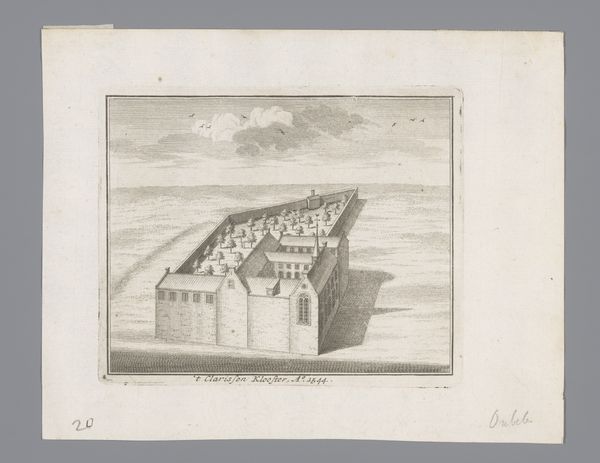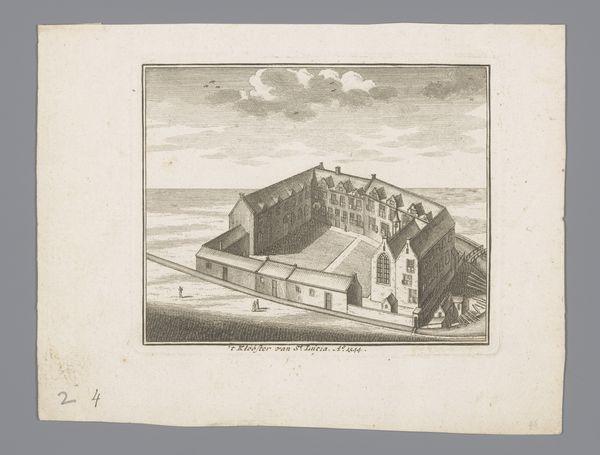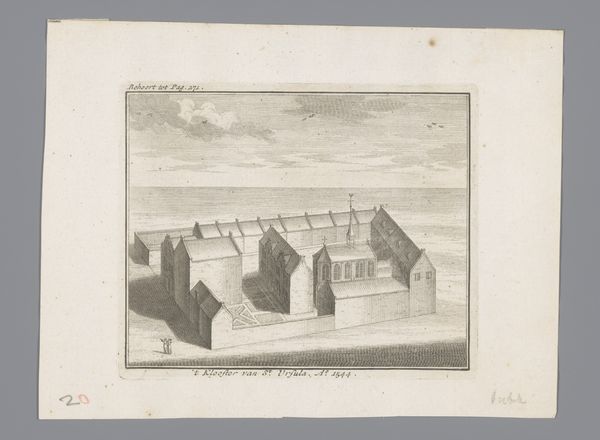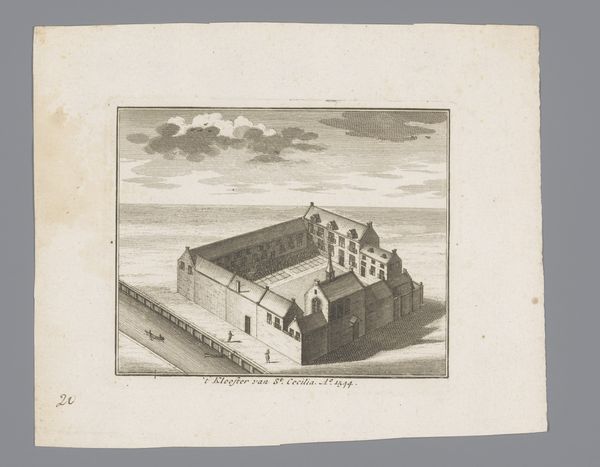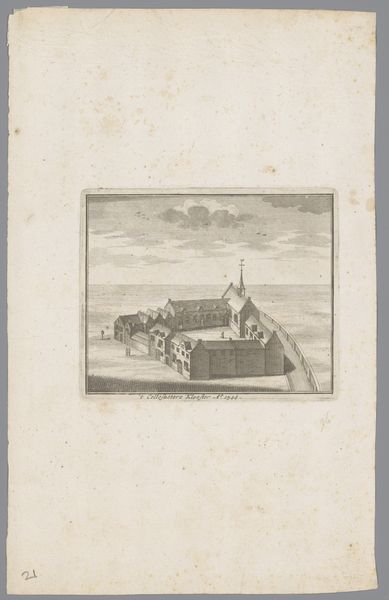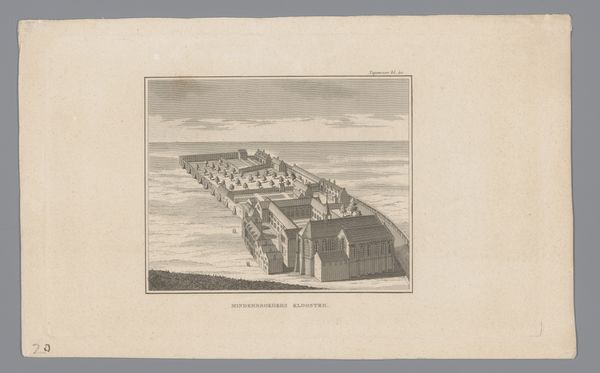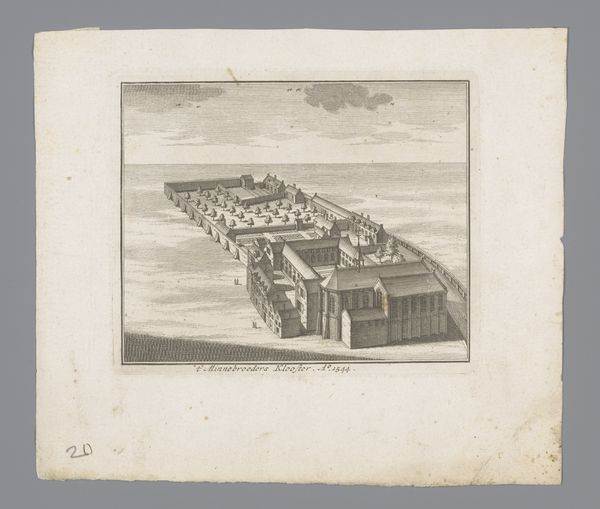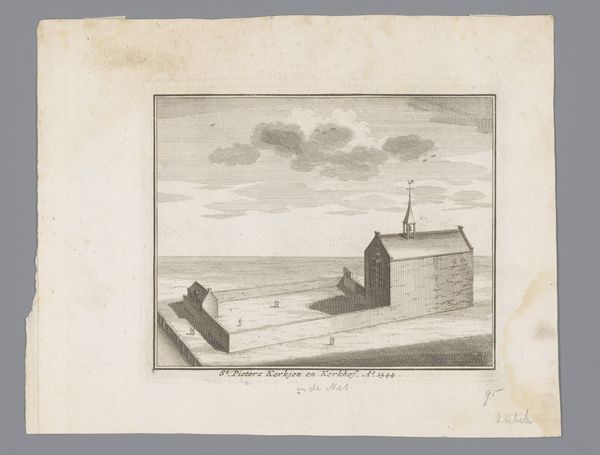
drawing, print, etching, paper, ink
#
drawing
#
dutch-golden-age
# print
#
etching
#
landscape
#
paper
#
ink
#
cityscape
Dimensions: height 111 mm, width 135 mm
Copyright: Rijks Museum: Open Domain
This bird’s-eye view of the Sint-Clara Monastery was made in 1544 by an anonymous artist, using a technique called engraving. The process involves incising lines into a metal plate, applying ink, and then pressing paper against the plate to transfer the image. Look closely, and you'll see that the entire image is constructed from these fine lines. The engraver’s skill is evident in the way they suggest depth and shadow. The density of lines creates darker areas, defining the architecture of the monastery and suggesting the fall of light across its surfaces. The clean, precise lines speak to a period of increasing print culture, where accuracy and detail were highly valued. Engravings like this one played a crucial role in disseminating visual information, and their proliferation reflects an early form of mass production, allowing for the broad circulation of knowledge and perspectives. It reminds us that materials and making are always deeply embedded in the social and cultural contexts of their time.
Comments
No comments
Be the first to comment and join the conversation on the ultimate creative platform.
